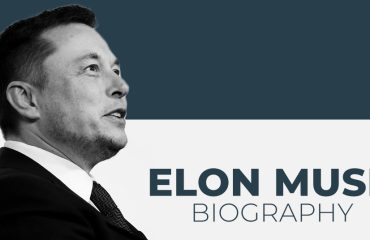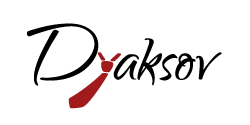What is productivity?
Productivity is a measure of the efficiency of а person performing а task, i.e how to make the most of the time we have when we perform our tasks.In this article, we’ll look at a few simple steps and concepts for improving our performance.Easy steps:
1. Set your goals
The goals are an important part of productivity and setting them will redound to the desired goals. If you want to learn more about this topic, you can read my blog article “What is the right way to set your goals?”
2. Make a TO-DO list
This is a common practice, but very useful. Making a to-do list, you can easily distribute and see all the tasks that you would like to do during a day or a period.Be specific in setting your goals. For example, not only “Working on a specific project”, but writing the details of what exactly you need to do for the “project”.
3. Create a schedule
Decide what are the things you can do first from your list and what will be their order. If you can, make a schedule of the day that includes the time you will work on each task, and the breaks that you will include in your day.If you plan monthly you can find it useful to put the main priorities and distribute them weekly. At the beginning of each week, you can write down your priorities and plan their sequence.
4. Prioritize
To prioritize tasks and understand top priorities is a very important part of being productive. The result will be a well-done job on time.Let’s take a look at a few strategies for prioritizing.
The Eisenhower matrix
The Eisenhower matrix is one of the fundamental strategies of prioritization. We can easily remove actions that waste our time using the Eisenhower box.This matrix can help you take action, organize better your tasks and do more of them. The good thing about the matrix is that it can be used for large performance plans and small daily tasks at the same time.
The matrix divides tasks into important and urgent. Main four quadrants are:— Urgent and important (tasks you will do immediately).— Important, but not urgent (tasks you plan to do later).— Urgent, but not important (tasks that you delegate to someone else).— Neither urgent nor important (tasks you delete).
Strategy Warren Buffett “ 2nd list”
This concept of this strategy aims to increase focus and to clarify priorities.The method comes from a well-known investor Warren Buffett who uses a simple performance strategy in three steps to determine priorities and tasks. The method is also useful in decision-making and if you need to do something on the moment.Step 1: write down the 25 most important things you want to do this week. These can be personal and professional goals /specified tasks/. This exercise can be done either fora long and a short period.Step 2: Circle the 5 most important goals/objectives.Step 3: You will have 2 lists. Write 5 tasks — 5 that are the most important for you and 20 other tasks that await you.
Ivy Lee Method
Many experts recommend this method for maximum performance. The strategy is simple – do the most important thing first.1. At the end of each workday, write down the six most important things you need to do tomorrow. Do not record more than six tasks!2. Prioritize these six things in the proper order for you.3. The next day, when you start working on tasks, first focus only on the first task. Work until the first task is complete before moving on to the second task. Navigate the rest of the list in the same way.4. At the end of the day, move all unfinished items to a new list of six tasks for the next day.5. Repeat this process every working day.
Anthony Trollope’s 15-minute routine
A 15-minute routine that Anthony Trollope used to write more than 40 books.Let’s imagine you have set your priorities for the day and one of your tasks is a big project that usually takes more time to be completed. You may feel frustrated and unproductive because you’ve been working on it for a long time and you haven’t even managed to finish it or do anything else.However, the writer Anthony Trollope developed a solution to this common problem.He wrote 40 books and instead of measuring his progress based on completing chapters or books, Trollope measures his progress with 15-minute steps.This approach allows him to feel satisfied with his achievements and very quickly he continues working on a big task (for example, writing a book).Measuring progress helps you go in the long run (big “projects”), which means you’re more likely to finish big tasks.The faster you start completing a task, the faster your day becomes productive and efficient.
5. Setting deadlines and measuring success
Once you have defined your tasks and priorities you should put deadlines for each one of them. Plan the exact time for completing tasks within the deadline.Leave extra time in your schedule every day for those unexpected problems that arise and stick to the deadlines. Following the master plan, the increase in productivity will come naturally. In that way, not only you’ll become more productive, but you’ll easily measure how much time-consuming a task is and how long it takes to complete it.Also, setting deadlines will make you more focused and effective.Always keep in mind its effectiveness. Don’t think about how productive you are or not at the moment, and think about how well you’ve focused, how much you’ve stuck to your plan, how accurate your schedule and timeline is. Also, pay attention to unexpected problems or interruptions in your workflow and think about what you can do to improve next time.
6. Concentrate.
No matter how well we plan and define our goals, we can’t be productive if we don’t focus on our own goals.Here are a few simple steps to focus on.
# 1 – Eliminate distraction
The first step to focus is to reduce or (ideally) eliminate distractions. Imagine all the distractions, how much time they would lose you. If you are focused on your work but your phone makes sounds and people talk — all this noise is around you, it will become much harder to focus.From science, we know that every time you encounter a distraction, it can take up to 21 minutes to regain focus. Don’t waste your time. Remove or reduce distractions as much as possible.
# 2 — Your focus is similar to muscle — train it!
The ability to focus is like a muscle. The more you train, the more this muscle will develop.If you’re used to concentrating for 5 minutes and now you’ll be doing it for 45, you’re heading for failure because you’re not used to it.To improve the amount of time that you can focus it is good to gradually increase the time of concentration, as an exercise.Train your focus and concentration just as you will train your muscles starting slowly but gradually.
# 3 – Do it — first thing in the morning
Like everything else, as your energy, your willpower, your focus is highest in the morning. Do the work that will need more time in the morning when you have more energy and you are more focused.As close as you are to the morning, the more attention you will have. You will have more concentration and you will easily focus.
# 4 – Plan
Always have a plan. Start your day by creating it. When you have a plan and a schedule, it’s much easier to remain focused.
# 5 — Take a break
Taking breaks will renew your focus. Your energy follows a very predictable pattern every day: you have energy and then it takes about 2 ½ hours to drop. When your energy starts to decline, so does your focus, willpower, and concentration.It is important to be organized in time and tasks, being focused on performing them.
Productivity tools
Thanks to digitization, we can find different techniques and applications that we can use to improve our productivity. Here are some of them:
Computer equipment and peripherals
If our daily routine is computer-based, then we need to choose the machine, which loads quickly and seamlessly. Using an SSD (Solid State Drive) hard drive, even if it is more expensive, it can improve the speed of a mediocre computer configuration or laptop.For example, whether we do design or video processing, investing in a good machine is key to our productivity. Choosing the class and size monitor (or two) can reduce the strain in our eyes and allow us to carry out work activities for a longer time. The eye protection application Iris for monitors and mobile devices can also help.If we have a limited budget for computer technology, we can get used to or remarketed or used high-end peripherals to provide us with the necessary productivity at an affordable price.
1. Organizing all in one
ProofHubLaunched in 2011, it is a cloud-based project management and collaboration tool designed to help to plan, collaborate, organize to deliver your projects on time. Includes many features including reports, calendar and more. Another benefit is that it can connect and give access to some common platforms we use such as Google Calendar, iCal, Box, Dropbox, Google Drive, Onedrive, Outlook and more. This way, you can keep all your scattered tasks in one place.Freedcamp serves as a central location for project planning, organizing and doing tasks. You can share tasks and project files, engage in discussions with team members. The big advantage here is that they provide many features for free.AsanaThe platform is a team productivity tool, helping everyone to stay focused on the tasks and be organized. It is more suitable for teams as it allows you to store all your projects and gather tasks in one place. It can help us to allocate our tasks to different projects. SlackYou can chat with colleagues, send messages, share files and photos, make calls, and — you can use the “don’t disturb” feature to let colleagues know you can’t answer away.
2. Google
Many people prefer to use Google mostly.Google Drive (along with Google Docs and Spreadsheets) makes it easy to share and edit an array of files. Much information can be stored there and arranged.Google CalendarYou can use it to organize your schedule, appointments, tasks. Separate multiple calendars for personal and professional use.
3. Mobile applications
WunderlistWunderlist is one of the easy ways to do something. Whether you are managing multiple work projects or planning a vacation or sharing a shopping list. The application helps to arrange all personal and professional tasks.EvernoteIf you had a good idea but you forget it while traveling to work, Evernote is a good multi-platform notebook that lets you record and organize your notes in text, images or audio while moving.
4. Time management and tracking
TodoistCreates new and useful applications that increase productivity. A new introduction to the platform is Smart Schedule, which uses artificial intelligence to help you create and schedule your tasks seamlessly.Another feature gives you a visual representation of how productive you are in completing your tasks.TogglTogglprovides an easy and simple time recording tool for individual users and teamsToggle also has powerful reports that show you exactly how you spend your time.Rescue TimeIt has a similar concept Toggle but offers more advanced features.Rescue Time can be installed on your computer and track what programs and websites you spend the most time on.It’s a pretty amazing tool that shows not only where you spend your time, but also what days you were more productive than others.
6. Visual organization
TrelloA relatively easy and convenient way to stay organized. Trello lets you add lists, labels, and tasks that you can arrange in your spare time. While nothing revolutionary, Trello can also serve as a visualization and a good alternative to cover your monitor with notes and tasks.
Conclusion
There are many tools that help to allocate time, to focus our methods on our work. But most importantly – act is what it is needed. Everyone in their daily lives is confronted with different tasks, challenges, activities that need to be completed, or they wish to fulfill their time. The most important thing to know is that being organized and disciplined in our actions will lead us to accomplish our goals, and this is done step by step.An effective time management strategy provides an opportunity to resolve such challenges, significantly reducing stress levels, while enhancing our productivity and helping us achieve our goals faster.








